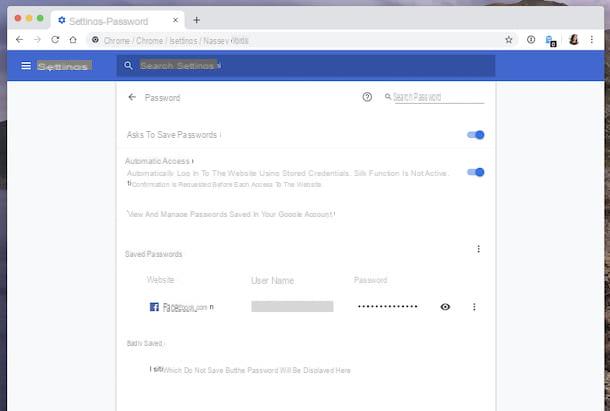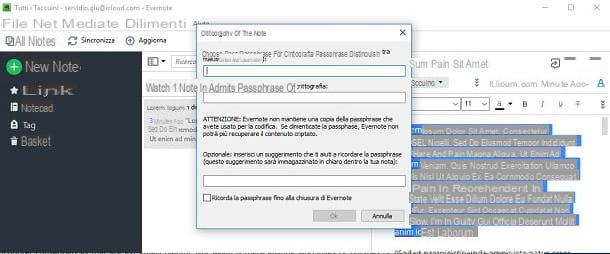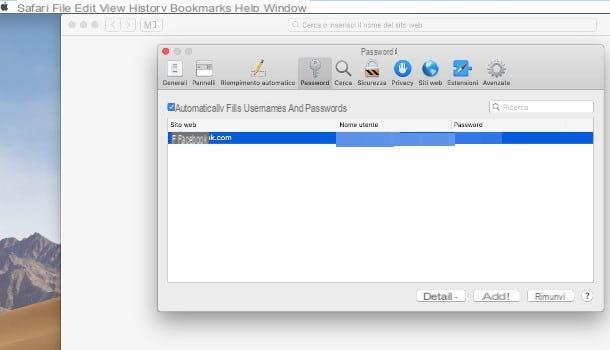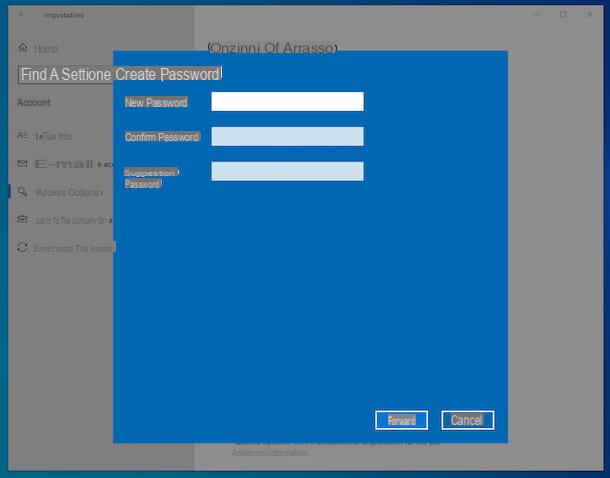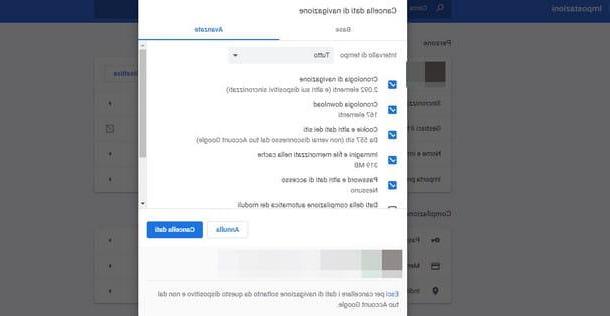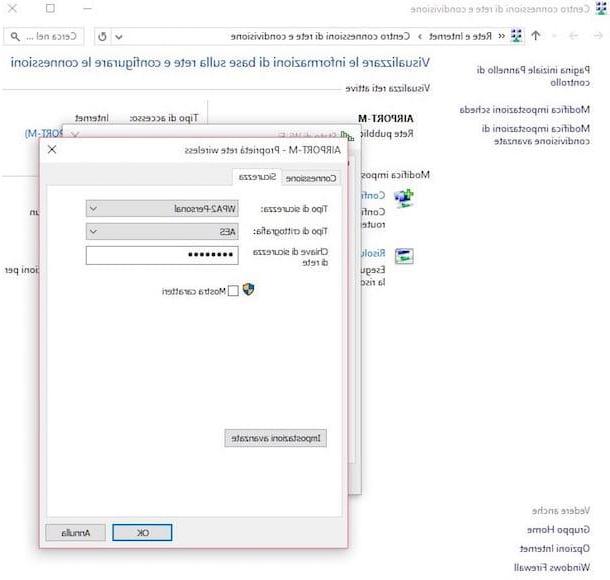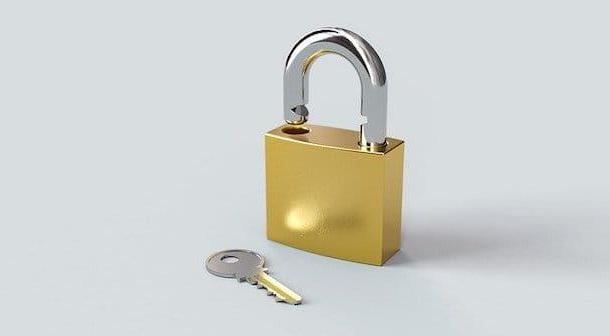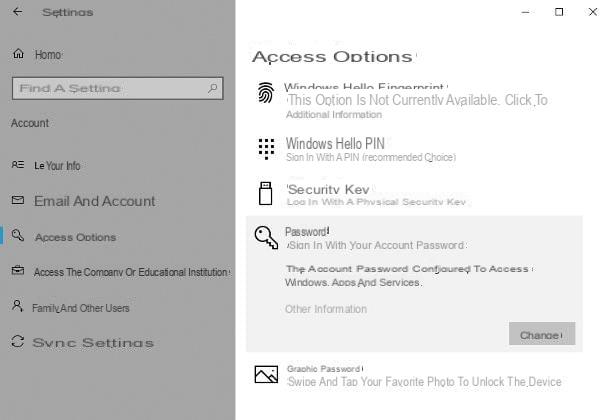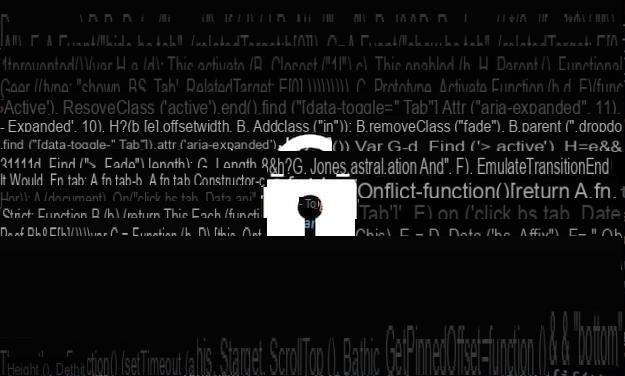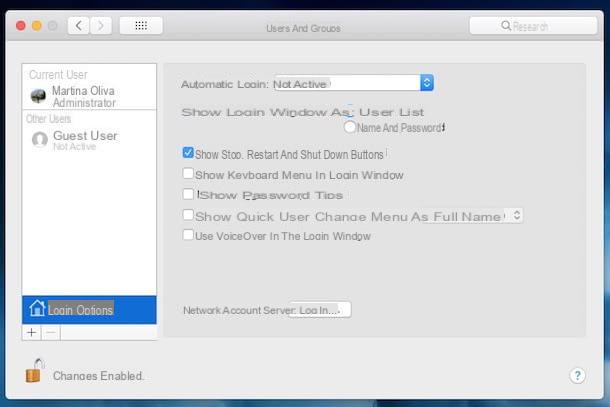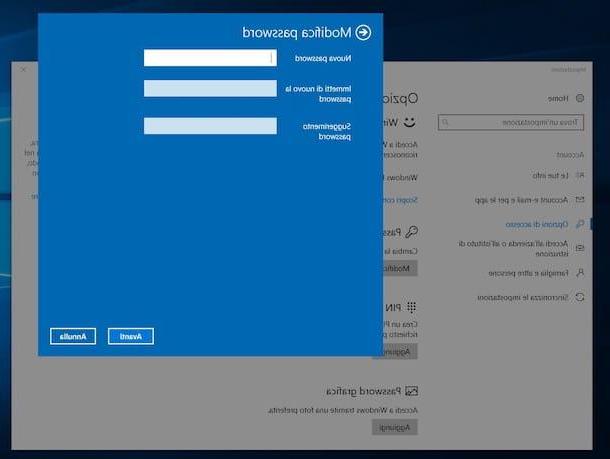Password protect a folder with no programs on Windows
As I told you at the beginning of the guide, as regards WindowsUnfortunately, there are no “standard” solutions available thanks to which it is possible to protect a folder with a password without using third-party programs.
The only way to obtain results similar to what - as we will see later - is possible to do on macOS and Ubuntu, is to resort to the use of dedicated software, as I indicated in detail in my tutorial on the subject.
However, this does not mean that you cannot still preserve access to one or more folders in other ways, by taking advantage of the features included in the Microsoft operating system. Which? I'll tell you right away.
Hide a folder
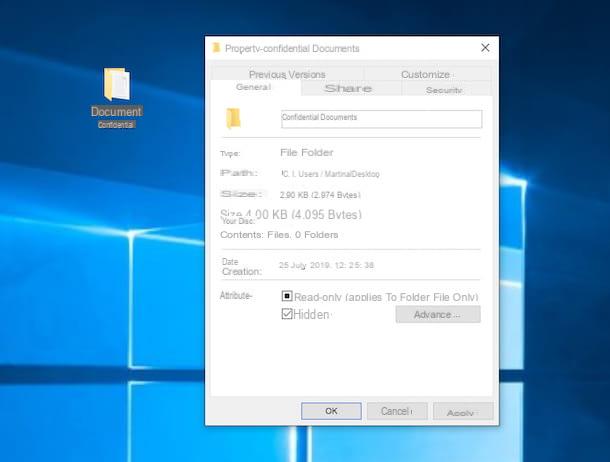
The first system that I invite you to consider to preserve access to a folder on Windows, without having to resort to the use of external programs, is to hide the latter in the eyes of others: to do this, right-click on theicon of the folder of your interest and to select the item Property give the menu to compare.
In the window that opens, go to the tab General (although it should already be active), select the option Hidden away present in correspondence with the wording Attributes (below) and click on the button first Apply e poi quello OK.
Once this is done, the folder of your interest and the files inside it will be invisible. You will therefore be able to access these resources only by correctly typing their address in the bar at the top of theFile Explorer Windows (which you can access by clicking on the gialla poster on the taskbar).
But keep in mind that in case you activate the display of hidden files and folders on Windows, by selecting the tab Show located at the top of the File Explorer window and ticking the option Hidden elements, hidden items can still be displayed (they are those marked with a 'transparent icon) and will be accessible to everyone.
To prevent this from happening, you can practice a simple "trick", which consists in marking the files and folders to be protected as a system file. By acting in this way, the folders will be invisible, unless the function to view protected system files is activated, which in any case is more difficult to locate than that to view hidden files and folders.
To find the option in question, it is necessary to open theFile Explorer, select the menu Fillet (top left) and click on the item Change folder and search options or go to the menu Instruments I will select the voice File Explorer folder options, then deactivate the voice Hide protected system files.
That said, to transform a folder into a system file, you have to intervene using the Command Prompt. So, click the Start button (I cheer with the windows flag) located at the bottom left of the taskbar, type "Cmd" in the search field and select the collegamento relevant più.
In the window that opens, enter the command attrib + s + h, after which he leaves one space and drag the folder of interest to you in the Command Prompt window, so that its full path appears. Then press the button Submit on your computer keyboard and that's it.
Should you have second thoughts, you can remove the system file attribute from the folder you previously hidden, calling up the Command Prompt as I explained earlier and issuing the command attrib -s -h [file or folder path], followed by pressing the key Submit.
For further information about the practice described in this chapter, I refer you to reading my guide on how to hide files and folders.
Change the read and write permissions of a folder
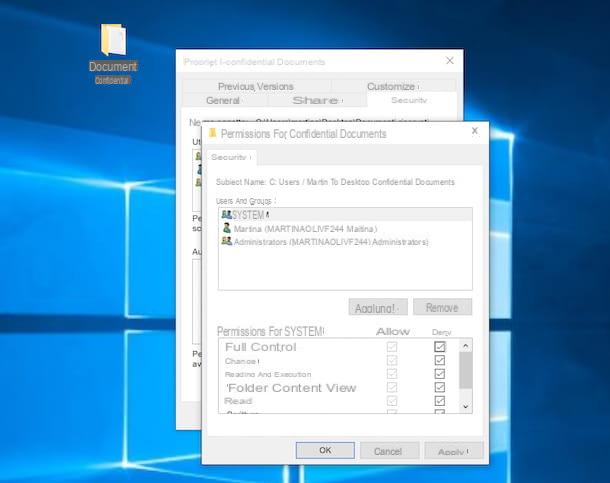
Another solution that you can consider is that which involves changing the read and write permissions of a folder, so as to make it not visible or editable by user accounts other than yours. If you are interested in this, I'll tell you how to do it right away.
To begin with, right click on theicon of the folder of your interest and select, from the context menu, the item Property. In the window that opens, then go to the tab Safety and click sul pulsating Modification.
In the further window that opens, select the user account name you want to allow access to the folder in the section Users and groups, then click on the buttons Apply, Yes e OK (twice in a row), to ensure that the changes made are applied.
After doing this, trying to access the folder with the user accounts for which restrictions have been set, a warning will appear on the desktop indicating that it is a protected item and that, therefore, it is not possible to continue with the operation.
For more information about the procedures covered in this chapter, you can refer to my tutorial on how to lock files.
Password protect a folder without programs on macOS
Stai using MacOS, can password protect a folder without programs creating aencrypted disk image in which to store your files or by generating a protected ZIP file. To find out how to proceed, please continue reading: you will find everything explained in detail below.
Disk Utility
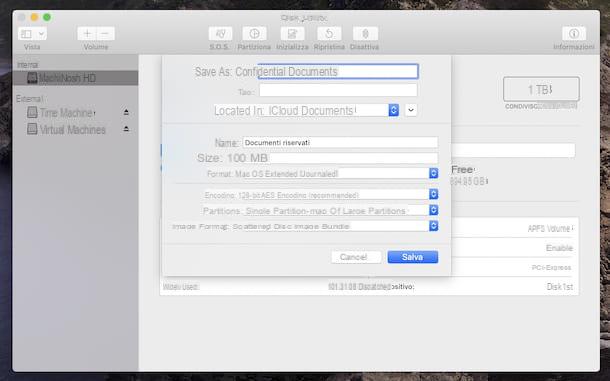
Let's start with the procedure that involves the creation of aencrypted disk image in which to store all files to be protected. To create it, you need to use Disk Utility: the default macOS tool for managing the internal disk and storage devices connected to the computer, as well as image files.
So, start Disk Utility by clicking on it icon (Quella with the hard disk and the stethoscope) found in the folder Other of Launchpad, click on the menu Fillet located at the top left and select the items New Image> Blank Image da quest'ultimo.
Therefore, set the drop-down menu Sizes indicating the maximum size that the archive must reach, then choose from the menu Size the option Mac OS extended (journaled), from that Partitions the option Single Partition - Apple Partition Map and from the drop-down menu Image format the option Sparse Bundle disk image.
Next, set the option 128-bit AES encoding (recommended) process the menu to tendin Encode and type, in the further window that opens, the password you want to use to protect the disk image in the fields Password e Verifica, confirming what has been set using the button Choose.
Finally, enter the name you want to assign to your volume in the fields Save as e Your name, specify the location of the Mac in which to save everything via the menu located in and click on the buttons Save e end.
After completing all the above procedure, to access the contents of the encrypted folder and to add data to it, all you have to do is double-click on its icon (which was added in the location specified above), type the Password set in the appropriate field in the window that will open on the screen and click on the button OK.
When you see fit, you can then "unmount" the volume by clicking on the symbol Eject placed next to the name of the encrypted folder in the sidebar of the Finder.
terminal
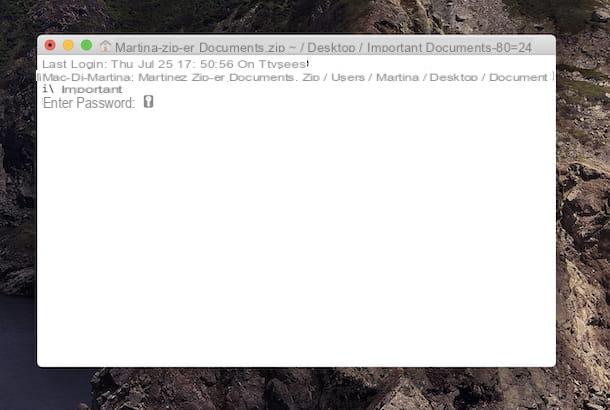
As for the creation of a secure compressed archive in which to include the folder of your interest, I inform you that you can succeed in the enterprise by acting from the command line, then using the terminal: Contrary to what it may seem, this is not a difficult thing.
To do this, start the Terminal by clicking on its icon (Quella with the black window with the line of code) that you find in Launchpad and, once the relative window is displayed, issue the command zip -er [nomearchivio.zip].
Then leave one space by pressing on space bar on the keyboard and drag to the right of the command la folder that you want to password protect, in order to view the path. Next, press the key Submit on the keyboard and type the Password that you want to assign to the compressed archive, by entering it twice consecutively, in both cases by pressing the key Submit.
After doing this, a password protected compressed archive will be generated containing the folder of your interest which, by default, will be saved in the folder Home on your Mac. To access its content, you will need to double-click its icon and enter the Password request in the appropriate field.
Password protect a folder with no programs on Ubuntu
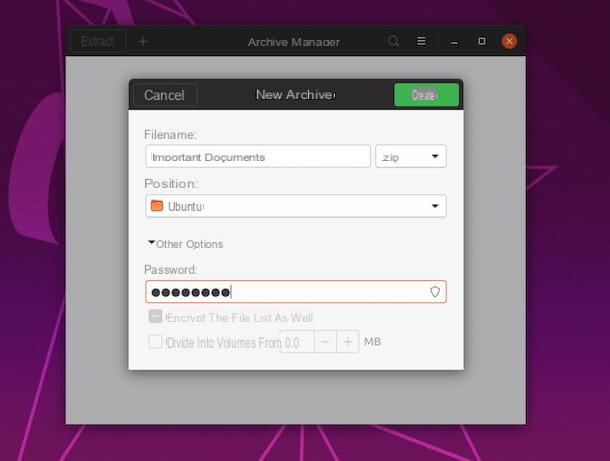
Stai using Ubuntu, you can password protect a folder without programs using the tool to create archive compressi included in this popular Linux distro.
Thanks to the tool in question, it is in fact possible to set a password to protect the generated ZIP archives and to include the folders of interest within them.
To proceed, you need to click on the icon of Show applicazioni (Quella with i shot) located at the bottom of the dock bar, look for the Archive manager among the various applications available and click on its icon (the one depicting a compressed archive), to start it.
In the window you now see on your desktop, click on the icon with the lines horizontally at the top right and choose the item from the menu that appears New archive. Next, type the name you want to assign to the compressed archive you are about to create (in the File name), select the format .zip (the only one that supports setting a password on Ubuntu) from the adjacent drop-down menu and indicate the location to save it, using the menu Location.
At this point, expand the section Other options which is found below and fill in the field Password with the password you want to use to protect the compressed archive, then click the button Crea.
Now add the folder you want to protect to the archive by clicking on the button [+] located at the top, selecting it from the file manager window that opens and pressing the button Add. Finally, close the Archive Manager screen by clicking on the "X" at the top right.
Once all the above steps have been completed, a password-protected compressed archive will be created in the location indicated above, containing the folder you intended to protect and which can only be opened by double clicking on its folder. icon and typing the secret word set by you, in the appropriate field visible on the screen.
How to password protect a folder without programs



